Videos—2MJ: Berea Region
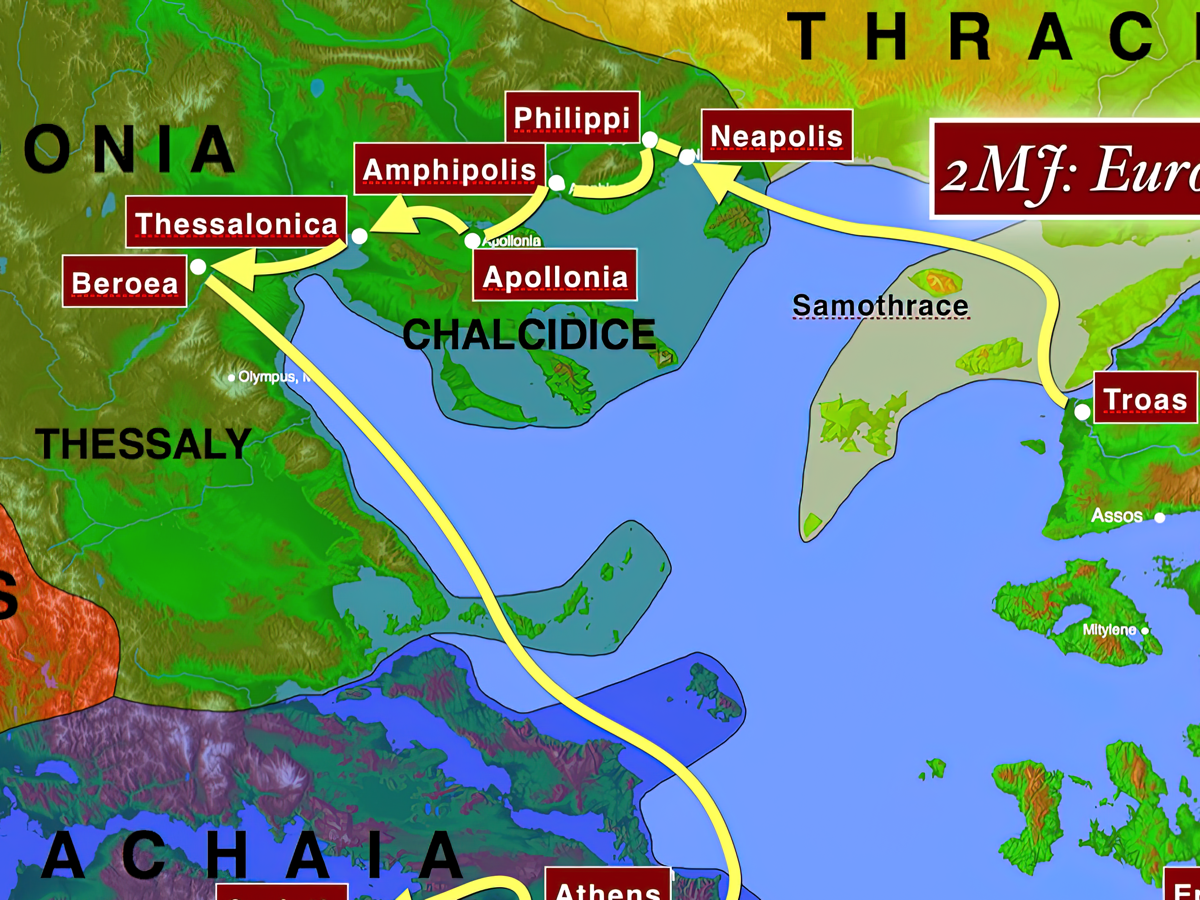
-
Macedonia—Berea
-
Berea: First Visit
Berea was quite the discovery on our first visit. This quaint little town nestled in the foothills is a hub of activity with lots to discover. We happened upon a Greek Orthodox mass on a Sunday held at the Saint Paul Monument, a beautiful memorial plaza commemorating the visit of the apostle to the city on the 2MJ after Thessalonica.

-
Berea: Paul's 2MJ Visit
Paul's visit to this city on the 2MJ is celebrated at the Saint Paul Monument in Berea. This white marble plaza has beautiful mosaics that chronicle the story in Acts 17. Even as does Luke in his Acts narrative, the monument puts focus on the significance of the vision of the Macedonian at Troas (Acts 16:8–10) that inspired the missionary leap from one continent to another, from Asia to Europe, for the gospel coming to Berea.
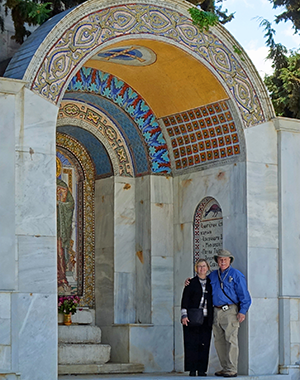
-
Berea: Roman Road
The modern city of Verea (Berea) has preserved portions of the ancient Roman road that Paul traveled on the 2MJ on his way through Berea. Interestingly, the main avenue through downtown Verea is exactly where these remnants are preserved two millennia later.

-
Berea: Gymnasiarch Inscription
Gymnasiums were a vital part of Hellenistic life. The focus was not just physical. Greeks for centuries had thought one could not develop a strong mind without a strong body. Complete health was holistic. While gymnasia were the center of physical workouts in the palaestra (exercise grounds), as well as competitions and qualifying for Olympic games, they also were the site of poetry readings and orations and other types of mental stimulation. Aspiration for the job of gymnasiarch, ruler of the gymnasium, was high on the list for any of the elite of ancient society. Strict rules regulating the use of the gymnasium as laid down by the gymnasiarch of Berea are preserved in this column inscription.

-
Berea: Archeological Museum
The Berea Archeological Museum is one of the hidden gems of this city. This multilevel museum was redone completely in 2004 in preparation for the many visitors to Greece for the 2004 Summer Olympics. The museum boasts two extremely rare artifacts preserving the term “politarch” that Luke uses in Acts—found only in Luke in all of ancient literature—to describe city officials at Thessalonica, long thought to be an historical inaccuracy by Luke but now proven to be historically, politically, and geographically precisely correct. Another treasure is the illustrious gold jewelry of Macedonian aristocrats.
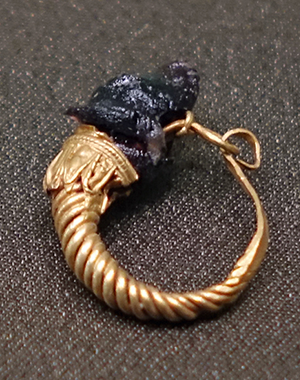
-
Berea: Politarch Inscription
The Berea Archeological Museum boasts two extremely rare artifacts preserving the term “politarch” that Luke uses in Acts—found only in Luke in all of ancient literature—to describe city officials at Thessalonica. Luke’s use of this rare term long was thought to be an historical inaccuracy by Luke, since the term was undocumented in any form from the ancient world. Recent inscriptional finds, however now show the term “politarch” used exactly as Luke has used the term as a civic office for city officials in the province of Macedonia unlike anywhere else in the Roman empire. Even a clay letter seal with the term “politarch” has been discovered and now is housed in the Berea museum. This evidence has proven Luke to be historically, politically, and geographically precisely correct.
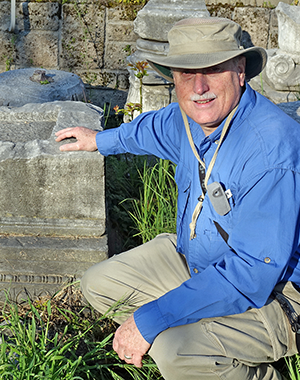
-
Berea: Claudius Inscription
The Claudius Inscription is another wonderful artifact in the Berea Archeological Museum. This inscription documents the citizens of Berea honoring the emperor Claudius (A.D. 41–54). The date of the inscription is ca. A.D. 41–44, so would have been seen by the apostle Paul and his company on their way though the city on the 2MJ.

-
Berea: First Visit
-
Macedonia—Vergina
-
Vergina: Philip II Palace
Philip II (359–336 B.C.) was king of Macedonia and the father of Alexander the Great. Philip’s palace was in Vergina. He is responsible for forging together the Macedonian city-states into the Macedonian empire that his son Alexander inherited. His powerful and rich reign was quite notable, and his name would have been well-known to the general public but for the extraordinary accomplishments of his son, Alexander the Great, who forever would overshadow his own accomplishments by transforming the entire world into the Greek empire suffused with a Hellenistic vision of cosmopolitan unity.
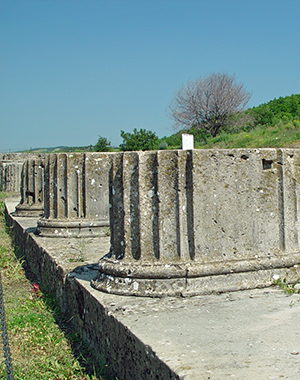
-
Vergina: Philiip II Tomb
The tomb of Philip II of Macedon (359–336 B.C.) was not discovered until the 1980s. The style was the traditional Macedonian tumulus, or mound of earth covering and preserving the architectural façade entrance into a royal tomb chamber. The actual remains of Philip’s bones were discovered still intact in his golden burial box. The tomb finds were fabulous and evidence the great wealth of the Macedonian empire, including a stunning, ceremonial gold wreath.
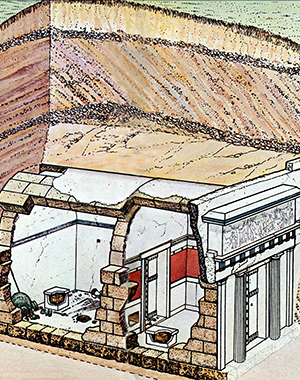
-
Vergina: Philip II Theater
The theater of Philip II of Macedon (359–336 B.C.) is famous because Philip was murdered in this theater while attending the wedding ceremony of his daughter, Cleopatra. This murder catapulted Philip’s young and untested son, Alexander, to the Macedonia throne. The young and inexperienced Alexander, however, turned out a powerful force of his own, unlike the political conspirators had imagined. Alexander not only quickly dispatched his father’s murderers, he consolidated his hold on the Macedonian empire. He then proved himself to be a brilliant general on the field of battle, and from this Macedonian kingdom went on to conquer the entire world.
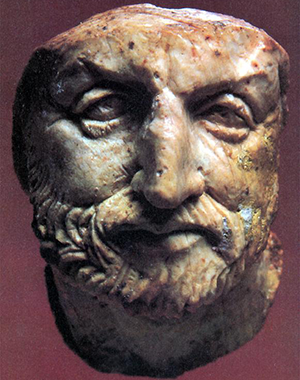
-
Vergina: Philip II Palace
-
Macedonia—Mount Olympus
Mount Olympus is not far from the valleys containing ancient Berea and Vergina. Paul would have passed by this mountain, either on his way to catch a boat to Athens or to travel the 250 miles by land to Athens. (The text at Acts 17:14 is unclear about whether Paul goes by sea or land to Athens; cf. KJV vs. modern translations.) This famous mountain figures into Greek mythology as the dwelling of the gods of Olympus. An interesting connection can be made to the antithetical image John of Patmos sets up with his imagery of New Jerusalem descending from heaven.
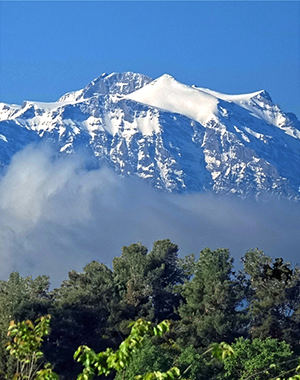
Videos-2MJ > Asia Philippi Thessalonica Berea Athens Corinth
Videos > Videos-1MJ Videos-2MJ Videos-3MJ Videos-4JR Videos-Rev